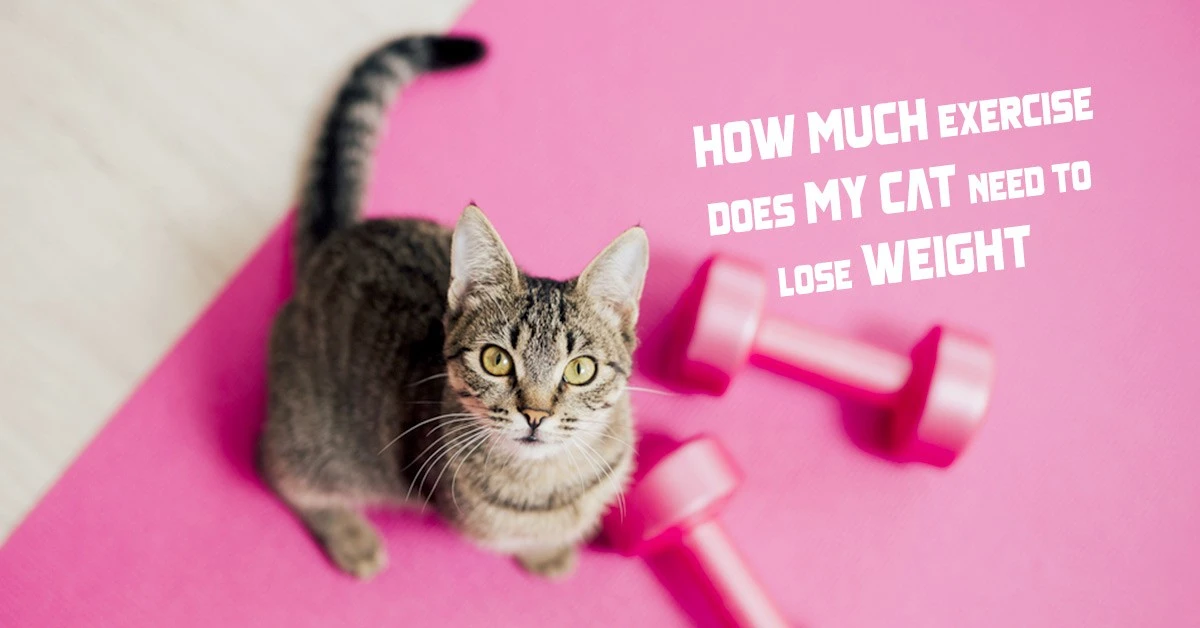Cats are agile and playful creatures that thrive on attention and activity. But, like humans, they can also face health challenges due to excess weight. If you’re a pet owner concerned about your feline friend’s well-being, you might ask yourself, “How much exercise does my cat need to lose weight?” This question is more common than you might think, and finding the correct answer can lead to your cat’s healthier and happier life.
How Much Exercise Does My Cat Need to Lose Weight?
When helping our furry friends shed those extra pounds, how much exercise my cat needs to lose weight is a crucial question. Regular physical activity is not only essential for maintaining a healthy weight but also for ensuring overall well-being. The general recommendation is at least 20-30 minutes of exercise daily. However, this can vary based on age, health, and weight.
Exercise recommendations for cats based age and activity
| Age Group | Daily Exercise Recommendation |
|---|---|
| Kittens | 30-40 minutes of active playtime |
| Adult Cats | 20-30 minutes of moderate exercise |
| Senior Cats | 10-15 minutes of gentle play or activity |
The Importance of Exercise for Cat Weight Loss
Exercise plays a vital role in any weight loss plan for cats. Here’s why:
- Burns Calories: Physical activity helps your cat burn excess calories, contributing to weight loss.
- Improves Health: Regular exercise strengthens muscles, joints, and cardiovascular health.
- Enhances Mental Well-being: Active play keeps your cat mentally stimulated and can prevent boredom-related behaviors.
Risks of a Sedentary Lifestyle
A lack of exercise can lead to significant health issues for cats, including:
- Obesity
- Diabetes
- Heart disease
- Joint problems
By understanding the risks associated with inactivity, you can better appreciate the importance of keeping your cat active.
Exercise Recommendations
Here’s how you can ensure your cat gets enough exercise:
- Interactive Play: Use toys that mimic prey to engage your cat’s natural hunting instincts.
- Encourage Exploration: Create a safe outdoor space or use a leash for supervised outdoor activities.
- Climbing and Jumping: Provide cat trees or shelves to promote natural climbing and jumping behaviors.
Feeding and Weight Loss Tips
In addition to exercise, a balanced diet is crucial for weight loss:
- Consult with a vet for a personalized diet plan.
- Use portion control to prevent overfeeding.
- Introduce slow feeders to prolong meal times.
Common Mistakes to Avoid
- Overlooking Veterinary Advice: Consult a vet before starting a weight loss program.
- Overfeeding: Keep a close eye on calorie intake, even when increasing exercise.
- Lack of Variety: Keep exercise sessions interesting by varying activities and toys.
How Much Exercise Does My Cat Need to Lose Weight? FAQ
1. Why is exercise important for my cat’s weight loss?
Exercise is essential for your cat’s weight loss journey as it helps burn calories, increase metabolism, and improve overall health. Regular physical activity also strengthens muscles and keeps the heart and joints in good condition.
2. How much exercise does a cat need to lose weight?
On average, a cat should engage in at least 20-30 minutes of moderate exercise daily to support weight loss. However, the specific exercise requirements may vary based on age, health condition, and individual energy levels.
3. Can indoor cats still lose weight without outdoor exercise?
Yes, indoor cats can lose weight through various forms of indoor exercise, such as interactive play sessions, climbing structures, and puzzle feeders. Providing engaging activities and toys can help keep indoor cats active and healthy.
4. How do I make exercise fun for my cat?
Make exercise sessions enjoyable for your cat by using interactive toys, incorporating their natural hunting instincts, and providing various stimulating activities. Rotate toys regularly and offer different types of play to keep your cat engaged and motivated.
5. Are there any signs that my cat is getting enough exercise?
Signs that your cat is getting enough exercise include:
- Weight loss (if necessary).
- Increased muscle tone.
- Improved energy levels.
- A reduction in behavioral problems.
Pay attention to your cat’s overall well-being and consult your veterinarian if you have any concerns about their exercise routine.
By incorporating daily exercise routines, monitoring their diet, and avoiding common pitfalls, you can help your cat achieve a healthy weight. Regular check-ups with a veterinarian will also ensure that your cat’s weight loss journey is on the right track. With patience and dedication, you can enjoy the rewarding experience of watching your cat become more active, healthy, and happy.
